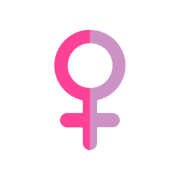If a woman has a two-legged uterus, and the pregnancy has passed and ended successfully, then, most likely, she will never know about the existing pathology.
In most cases of pregnancy with a two-legged uterus, this is exactly what happens. Nevertheless, in many cases of female childlessness and inability to bear a child, the reason is found precisely in the presence of a two-legged uterus.
A bicornuate uterus is a pathology in the development of the uterine cavity related to disorders of embryogenesis, in other words, disruptions in the formation of the reproductive system.
Under the normal course of the process, the uterus develops in stages : from a formation with two cavities to a full-fledged single-cavity organ of the reproductive system. The degree of pathology in the presence of a bicornuate uterus can be different:
– saddle uterus;
– partial two-hornedness ;
– total two-hornedness .
The degree refers to the different division of the uterus into processes. The most striking pathology is observed in the saddle uterus. Total two-hornedness is characterized by the presence of two separate processes that converge at the uterine neck. The degree of pathology of the bicornuate uterus is reflected in the woman’s ability to reproduce.
With total two-hornedness, the processes of the uterine cavity are bred in both directions along the line of the ligaments of the sacrum and uterus. The angle between these processes can be different. The noticeable division of the uterine cavity causes the formation of almost isolated cavities that are close to each other.
I must say that even with such a seemingly important deviation, bearing a child and the birth process can take place within normal limits. The fertilized egg is fixed on the inner surface of one horn, and a normal pregnancy develops. It rarely happens that a fertilized egg is attached in both horns of the uterine cavity. Nevertheless, even if the pregnancy is proceeding normally, a woman with a bicornuate uterus is constantly under medical supervision. Particular attention should be paid to your health and emotional state.
Difficulties with the fertilization process, as a rule, do not appear. The further course of bearing a child is influenced by many factors.
As a rule, in the presence of a two-legged uterus, concomitant transformations are observed in the endocrine and genitourinary systems. These changes can adversely affect the conception and bearing of the child.
During pregnancy, a woman has a risk of spontaneous miscarriage or the beginning of the labor process ahead of time. This is due to the fact that the bicornuate uterus cannot provide sufficient blood circulation in the placenta, its presentation . The developing baby is squeezed inside the uterine cavity. In this case, the inconsistency of the uterine muscles is observed.
Women who are diagnosed with a bicornuate uterus are usually given a caesarean section to relieve the burden. This is required to avoid injury or damage to the baby during childbirth. Pregnancy with a two-legged uterus with the threat of termination of pregnancy, provided the child is viable, is a direct referral to a cesarean section.
Dysmenorrhea, childlessness, several spontaneous miscarriages in a row indicate suspicions about the presence of a two-legged uterus in a woman. To diagnose a bicornuate uterus, ultrasound, the method of hysterosalpingography, and laparoscopic studies are used. If necessary, the bicornuate uterus is surgically corrected to its normal state.
All that has been said above, of course, is not immutable. The only thing that can be attributed to all pregnant women with a bicornuate uterus is constant observation by a doctor and control of their condition.
